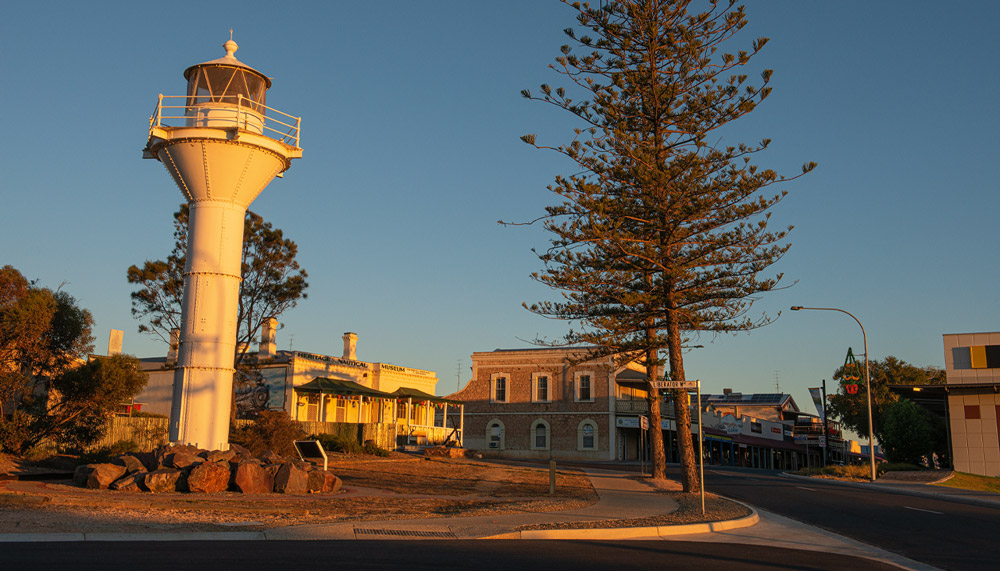In the north of the Yorke Peninsula, SA, the attractive 3500-soul seaside town of Wallaroo seems on the cusp of an exciting growth period.
Story + Photos Ken Eastwood
You can understand much about the beautiful seaside town of Wallaroo just by looking up. Its past, present and future are illustrated by its tallest structures. By the jetty, there’s the dominating silos, built in 1957, that hold around 138,000 tonnes of locally produced wheat and barley. The next tallest structure is the 40m high chimney dating back to the 1860s and what was once the world’s largest copper smelters outside Wales. And over at the Copper Cove Marina, in one of the newer sections of town, there’s a flash, five-storey holiday apartment complex and Coopers Alehouse that is part of the roaring tourism industry that sees the town double in size over summer to some 7000 people.
The skygarden above the penthouses at Wallaroo Marina Apartments gives a commanding view over vast real estate developments attracting retirees from 200km around. Where there were sand dunes and a clay quarry (used to make bricks for the 1860s–1923 copper industry), a marina now sparkles, with stunning fishing boats in glistening fingers of water, and project homes spreading out like samphire on a salt lake. The newer streets, with names like Spinnaker Crescent and Cutter Drive, form a continuous link with the white-sand North Beach and its community, which was once a satellite town of shacks almost a half-day trip away from Wallaroo.
There are almost no backyard pools, because the flat beach with its clear water is so inviting. The tide recedes 100m or so, and the hardened sand is safe for families to drive on, even in 2WDs.
Looking south, towards the older parts of town, couples walk Labradors along the heritage walk and, beside 80-year-old Norfolk pines, kids play near the century-old town hall in the late afternoon light. A couple of commercial fishing boats head out prawning, and the jetty is dotted with anglers hoping to beat the seals to yellowfin, squid and a few kingfish that have come in close in the warmer weather.
From its small commercial hub to its older streets, the town is peaceful and neat as a pin. Roads in the older parts of town have names like Ireland, England, Scotland and Charles, and are lined by well-cared-for limestone cottages dating back to the copper smelting period. Many have incredible history held in their walls – such as the former convent on Young Street lived in by Saint Mary MacKillop, in 1897, when she was helping set up a school that now bears her name.
This story excerpt is from Issue #129
Outback Magazine: Feb/Mar 2020










